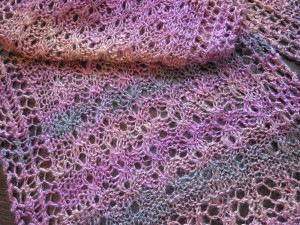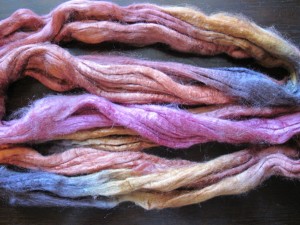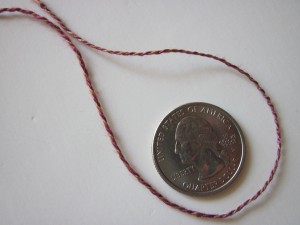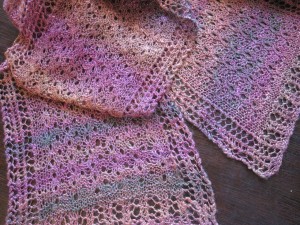I hate it when I do stupid things. I should have known better, but I wasn’t paying attention like I should have. My mistake was in using this wool lace piece atop my walnut wood grand piano that I periodically polish with lemon oil. Unfortunately, one one occasion, I must have missed thoroughly wiping down a small area of the piano’s cover. After returning the lace to adorn the top of the piano, the acidity in the oil treatment eventually caused the wool damage you see here.

This wool damage happened years ago, and fortunately I learned my lesson and I’ve not repeated the mistake. The reason I am bringing it up now is, as you can see, I still have to tackle repairing this lace. Of course, the damage has not gotten worse because once I removed the contact with the acid source, things are ok. I am so careful to use acid-free papers for my published patterns, archival methods for storing my knitted models, etc., so I definitely know better. Bad me!
I know that someone will ask — I made this lace in 2 strands of laceweight yarn using Emily Ocker’s Lace Garland Shawl pattern in the Winter 1987 issue #9 of Knitter’s Magazine (out of print). This pattern was later republished in the book Shawls and Scarves: The Best of Knitter’s Magazine
p.s. You might have thought this was insect damage (e.g. moths or carpet beetles). If you ever experience similar damage (and I hope you don’t), do check that the way you are using or storing your fibers are not such they are in contact with something that could harm the fibers. It would be a shame for you to assume it is insect damage, treat for that, and then just return to continuing to have the problem for other reasons.




